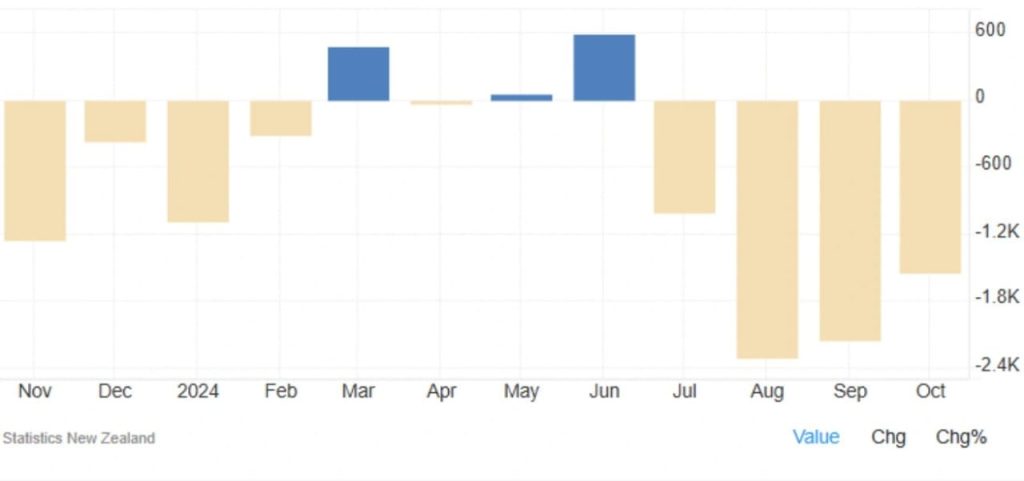
New Zealand’s Trade Deficit Narrows in October 2024
New Zealand recorded a trade deficit of NZ$1.5 billion in October 2024, marking an improvement from the NZ$1.7 billion gap reported in the same month last year. This reduction in the deficit reflects a positive shift in the country’s trade dynamics, supported by a robust increase in exports and a moderate rise in imports. The figures provide insights into the country’s economic activity, showcasing strong performance in agriculture and infrastructure-related sectors.

Exports Surge Across Key Sectors
In October, New Zealand’s exports rose by 7.5% year-on-year, reaching NZ$5.8 billion. This growth was fueled by standout performances in several sectors. Dairy products, including milk powder, butter, and cheese, led the way with a 16% increase, cementing their position as a cornerstone of the nation’s export portfolio. The fruit sector achieved a remarkable 314% growth, underscoring its rising importance in international markets.
Precious metals and jewelry exports surged by 77%, reflecting strong demand for these high-value goods. Additionally, meat and edible offal exports climbed by 6.1%, contributing significantly to the overall increase. These gains demonstrate New Zealand’s continued strength in providing high-quality agricultural and commodity products to global markets, bolstered by its reputation for sustainability and excellence.
Imports Highlight Infrastructure and Transport Investments
On the import side, total spending increased by 3% to NZ$7.3 billion, with key areas of growth pointing to significant investments in infrastructure and transportation. Imports of aircraft and parts skyrocketed by 644%, while railway stock purchases surged by an extraordinary 862%. These figures suggest a focus on modernizing New Zealand’s transport capabilities and infrastructure, possibly in response to growing demand for efficient connectivity and logistics.
Other major contributors to the rise in imports included pharmaceutical products, which saw a 26% increase, and materials like salt, stone, and cement, which grew by 265%. The latter highlights ongoing construction and development projects, further indicating a push towards infrastructure improvement across the country.
Key Trade Partners and Strategic Implications
New Zealand’s trade relationships remained strong, with China, Australia, and the United States serving as the top export destinations. These countries continue to show high demand for New Zealand’s agricultural goods, precious metals, and other exports. On the import front, China, the European Union, the US, and Australia were the leading suppliers, reflecting their roles as critical sources for machinery, pharmaceuticals, and raw materials.
Looking ahead, the narrowing trade deficit and the diversified nature of exports signal a promising outlook for New Zealand’s trade balance. With growing demand for its high-quality products and increased investments in infrastructure and transport, New Zealand is well-positioned to strengthen its economic resilience and global trade presence. Continued focus on export diversification and sustainable development will be key to maintaining this positive trajectory.
Share
Hot topics

What Is the US Dollar Index (DXY) in Forex?
If you’ve spent any time exploring global markets, you’ve certainly heard about the US Dollar Index, known as DXY. For many beginner traders, it appears to be one of those...
Read more




Submit comment
Your email address will not be published. Required fields are marked *